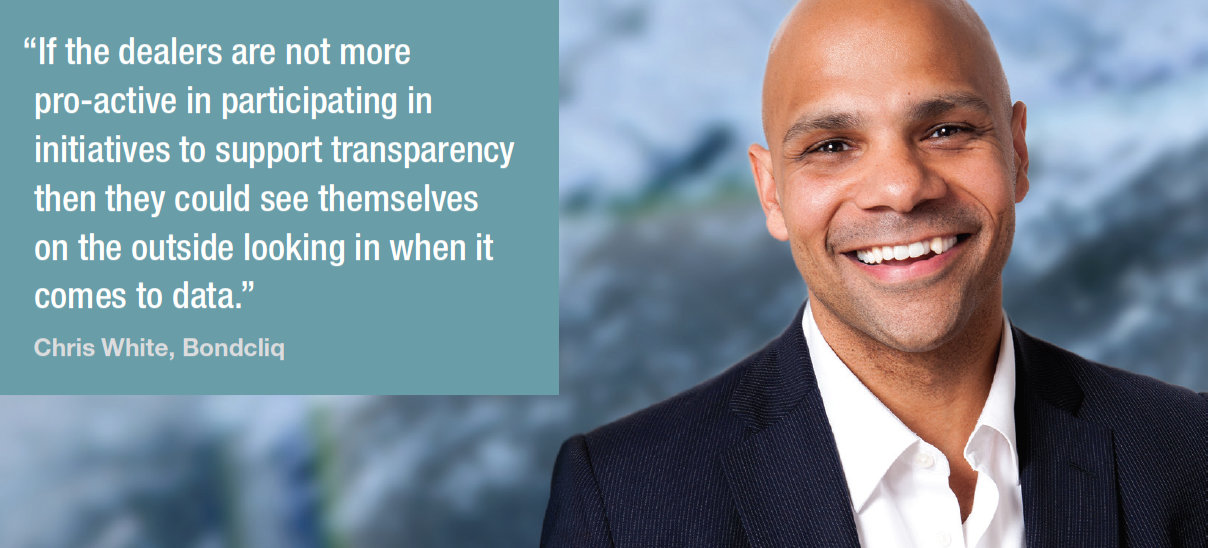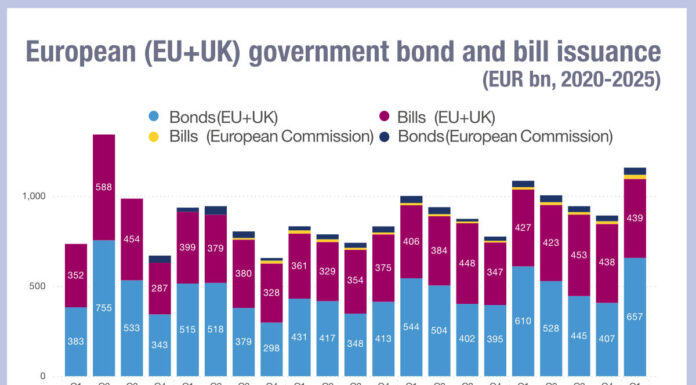 Asset managers agree they need access to more trading data, but have struggled to share it effectively between themselves.
Asset managers agree they need access to more trading data, but have struggled to share it effectively between themselves.
The paucity of access to bond data in European markets is a constant worry to buy-side traders. Lacking a utility of post-trade pricing data, such as the US has with the Trade Reporting and Compliance Engine (TRACE) run by self-regulatory body the Financial Industry Regulatory Authority (FINRA), Europe is currently reliant upon commercial sources of data.

At the Fixed Income Leaders Summit in 2019, two senior buy-side traders, Oscar Kenessey, head of derivatives, fixed income and currency trading at NNIP and Carsten Just, head of fixed income trading at Nordea Asset Management, discussed the potential for buy-side firms to share data as a step forward.
“The more data and history you have the better,” said Just. “Once data is lined up you can use it as a window to look into an opaque market. But the data is in variety of shapes and data cleaning remains the big issue.”

Paul Daley, head of fixed income lab at analytics provider, BondWave, says that for any sharing initiative this issue remains the greatest challenge.
“In general sharing is a positive, it is a step towards getting more data,” he says. “But it is only a step, because the structure of data is poor and non-standardised and without standardisation every new initiative creates added complexity.”
Pulling that information into a format that can be used by multiple firms is currently well supported by several commercial offerings. These include the major trading venues plus standalone data and analytics providers.
Where many traders report an information gap is at the basic level of post-trade information, which lets them compare their activity against that of other firms.
“The challenge that traders have is; do they actually have a benchmark to compare this price against, and is it reliable? Do they have that consistently across their portfolio?” says Jason Waight, head of EU Business Management & Regulatory Affairs at MarketAxess. “Derived data prices will become increasingly important as more data becomes available. Composite+ (CP+), our AI-powered predictive pricing engine, is essentially that – it allows the user to work out with a reasonable degree of confidence, where the level of a given bond should be.”
Why no tape?
The appetite for a tool that delivers basic information is indicative of failure by regulators to support greater transparency, and dealers in delivering a higher quality of information to their clients.
“This issue raises two points,” says Chris White, CEO of Bondcliq, a sell-side trade data analytics platform. “Firstly, why hasn’t MiFID II been more effective? It seems to have been a waste of time if somebody has to put this [data sharing idea] forward in order to make any progress, and the buy-side seems to agree with that. Secondly, if the dealers are not more pro-active in participating in initiatives to support transparency then they could see themselves on the outside looking in when it comes to data.”

Even if the European Commission’s plans to develop a post-trade tape for fixed income instruments were to progress in a timely fashion, expectations are low for Europe’s scope of bonds and therefore reportable data.
“Best case scenario, a fixed income consolidated tape is three to five years away, if it actually ever happens,” says Paul O’Brien CEO of buy-side data sharing platform Glimpse Markets. “If you look at the number of corporate bonds that have been deemed liquid by ESMA, it’s tiny. Even if you aggregated all post-trade data from the approved publication arrangements (APAs), you’re still left with very little.”

Building a benchmark that allows a peer-to-peer comparison to take place seems very appealing in principal, but only if certain hurdles can be overcome.
“The problem is a purely practical one,” says Waight. “You have to persuade people to share and there is always an inequality. Whenever we have had discussions about this in the past, the rock that the ship founders upon is that asset manager ‘A’ has 100 prices and asset manager ‘B’ has two.”
Daley adds, “In general sharing is a positive, it is a step towards getting more data. But it is only a step, because the structure of data is poor and non-standardised and without standardisation every new initiative creates added complexity.”
A fresh attempt
One platform currently attempting to negotiate this process at the moment is Glimpse Markets. It has launched a buy-side to buy-side data sharing system, which is free to access for firms that provide data over a certain threshold, and charges dealers and platforms for access to the data.
Groupama Asset Management has publicly announced signing up to the platform, to contribute and share their corporate bond trading data with others on the network, and Glimpse says that legals are under review with 30 other buy-side firms. It expects to be launching once eight to 10 buy-side firms have signed up, with the hope being that will occur before the end of the year.
“The volatility in March this year highlighted a big limitation of the current fixed income market structure, namely an over reliance on composite and indicative pricing feeds that don’t always paint a clear picture of what’s happening in the market,” argues O’Brien. “There is no substitute for live executed prices; traders need greater pricing clarity and more market transparency and we’re offering that.”
 Eric Heleine, head of trading desk & overlay management at Groupama Asset Management says, “On paper this offers more analytics than we can access today, which will support us in pre-trade decisions. The important element will be whether we can have enough firms sharing data, that it offers a realistic picture of where prices are in the market. If we get that we can use an internal dashboard we can benchmark our performance with the market, we can use it to help benchmark ideas between traders and portfolio managers.”
Eric Heleine, head of trading desk & overlay management at Groupama Asset Management says, “On paper this offers more analytics than we can access today, which will support us in pre-trade decisions. The important element will be whether we can have enough firms sharing data, that it offers a realistic picture of where prices are in the market. If we get that we can use an internal dashboard we can benchmark our performance with the market, we can use it to help benchmark ideas between traders and portfolio managers.”
O’Brien notes that in setting the systems up, the main issues it has had to consider are related to data ownership, data quality, block trades, and platform governance.
Heleine says, “Governance has been the main discussion point with Glimpse Markets, and on the buy-side committee that guides it, we have had concentrated discussion on how data is allowed to be used and shared, how to avoid information leakage.”
Potential for success
The new approach by Glimpse Markets will now be tested via its ability to get a weight of buy-side firms on board to create the necessary volume of data that will give it validity.
“Confidence is the key to its success; we need the critical mass of firms, top tier asset managers in Europe as well as Tier 2 and Tier 3 firms, so we can be certain it replicates the market,” Heleine observes. “Some big asset managers might think that the analytics they already have are being replicated.”
However, there are potential concerns if dealers find they cannot access data effectively, creating a split in understanding of where the market is, says White.
“From a books and records standpoint the aggregating of post-trade data for the buy-side makes a ton of sense but I don’t think a buy-side only post-trade data system will have a positive impact on market trading conditions,” he observes. “It is possible that it would have a negative impact by creating an information asymmetry gap between the buy-side and the sell-side.”
Daley notes that the drive for transparency in the US has focused on the dealer community, particularly around mark-ups and fair value calculations. If those rules are enforced fully, he believes that would better support buy-side access to data.
“The first push is really on the sell-side not the buy-side, where regulators are saying that dealers have to show the mark-up on a trade, have to do fair value calculations based on the same type of calculation as the mark-up disclosure calculations and in enforcing those rules, the sell-side begins to measure itself in that way,” he notes. “Once it measures itself in that way the buy-side can begin to measure counterparties in a standard way. That is where progress comes from.”
Yet Heleine is resolute of the need for buy-side firms to push for change – particularly if it might support a consolidated tape in future.
“We need to support initiatives like this,” he says. “These first steps could lead to regulators recognising the value of this data sharing for end investors.”
©The DESK 2020
©Markets Media Europe 2025

























